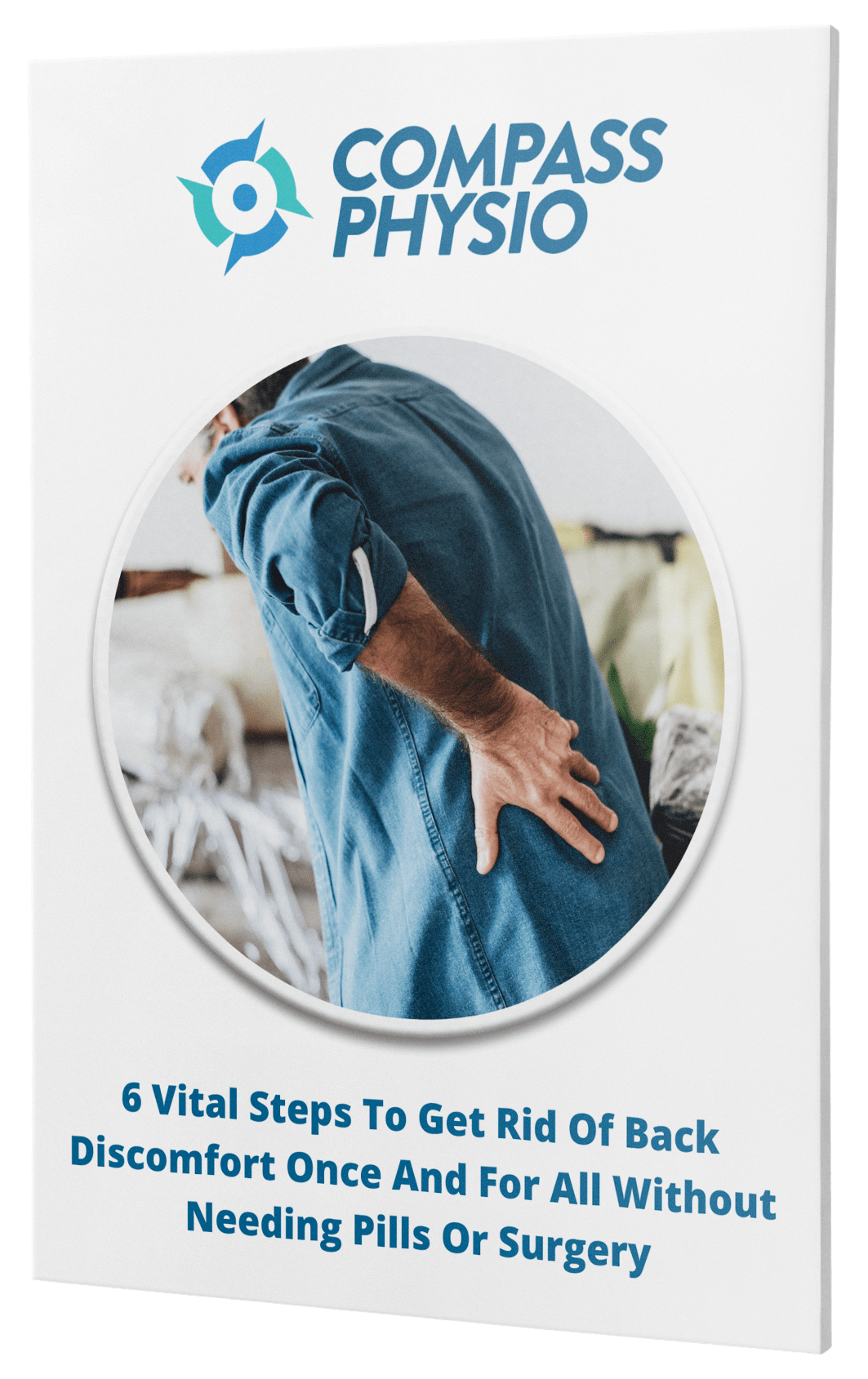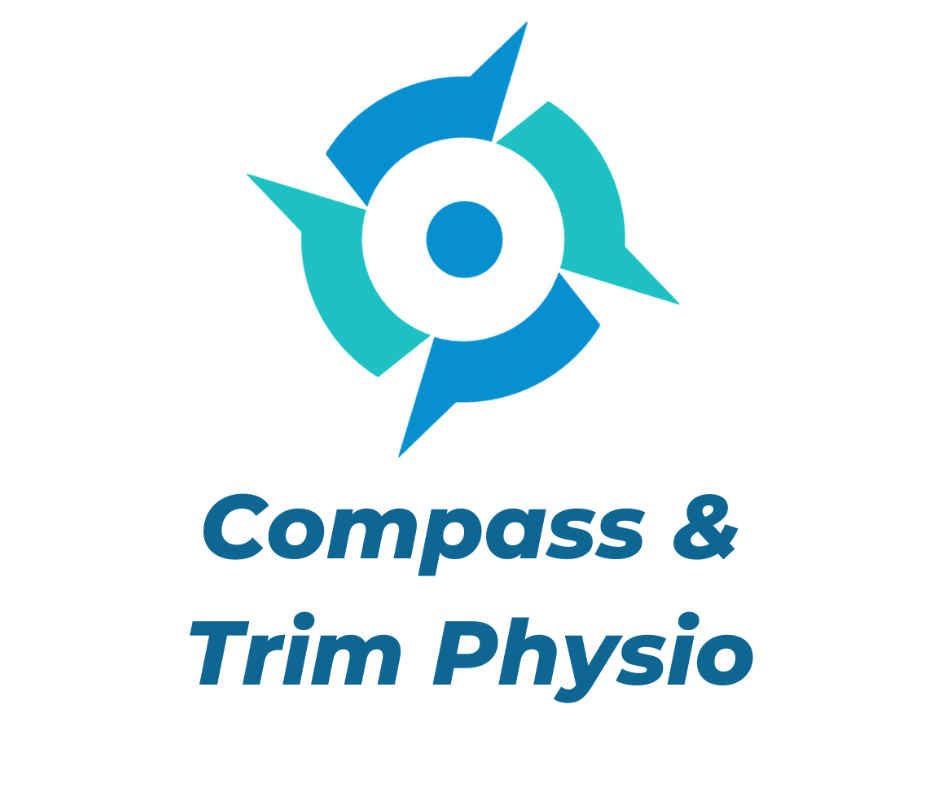The Best 5 Back Pain Tips
Here at Compass Physio and Trim Physio we see a lot of people who have had a back injury
we like to keep you informed with with the top tips to keep your pain under control.
We have added a link to our FREE back pain tips.
Within this blog we have put 5 more tips to try help you or someone you know start to overcome back pain.
Feel free to send them on this information

Tip #1 Breathe to Improve your Back Pain
The way we breathe has the potential to be a complete game changer for anyone dealing with back pain.
Most people tend to think they’re breathing well just because they are alive.
Sometimes our bodies tend to develop unhelpful breathing patterns.
These can impact how we move and contribute to pain in your back.
When we are in pain we tend to breathe through our upper chests all of the time.
This means that our diaphragm, pelvic floor and ribcage don’t move very well.
Each of these areas can have a huge impact on your back pain.
When we take short, shallow breaths through our upper chest, the muscles around our ribcage have to work quite hard.
This leads to that feeling of tension and tiredness in the muscles in your back.
Many people dealing with back pain have nearly forgotten how to take an effective deep breath.
They may feel short of breath with the simplest of tasks.
Try to slow down and relax your breathing, in through your nose and slowly out through your mouth.
The longer you can exhale, the more your diaphragm is able to lengthen.
Your diaphragm is a very important part of your “core muscles” and we need it to be able to go through a full range of motion.
When we breathe through our upper chest and neck(usually when we are stressed), our diaphragm can get stuck in a shortened position.
Focussing on slowing down your breathing also helps to change your physiology.
This can help us get out of fight/flight mode.
In fight or flight mode our body is quite tense
– Our heartrate is increased
– Breathing rate is increased.
A lot of us spend too much time in this stressed state due to the demands of our modern lives.
Being able to relax and return to our “rest and digest” mode allows our muscles to relax and let go of the tension that they’re constantly holding onto.
Many people with back pain tend to hold their breath while moving.
This also leads to more tension in the muscles around the ribcage and can increase your back pain.
Restoring your ability to breathe well is a key part of our treatment of back pain here at Compass Physio.
We will teach you how you can incorporate relaxing breathing strategies into your daily activities
This will help you to move well with less pain.
Tip #2 Relax to Improve your Back Pain
Being able to relax is key to helping your back pain.
Do you find that your back pain is usually at its worst when you’ve been sat down on the couch for a while or when you first get up in the morning?
Or when you’re trying to find a comfortable position to sleep in at night.
No matter what way you twist and turn and change your pillows you just can’t seem to find a position that isn’t painful?
When we sit or lie down our muscles need to be able to relax in order for us to be comfortable.
A lot of people with back pain tend to sit bolt upright.
This actually forces your lower back muscles to work quite hard even though you are in a “resting” position.
You can test this right now by placing your hands on your lower back and sitting up tall with your chest up.
You’ll feel those lower back muscles harden and get quite tense.
On the other hand, if you allow yourself to just sigh out and slouch a little through your back,
You should feel these muscles soften and relax.
Now imagine sitting for half an hour in that bolt upright position,
It’s quite a workout for your lower back muscles, is it any wonder that your back gets sore?
Here at Compass Physio we focus on teaching your body how to relax, in particular the muscles along your spine.
In the past, a lot of treatments focussed on building strength and stability around the core muscles.
This can sometimes drive that stiffness and lack of flexibility.
We aim to restore your body’s ability to be strong and stable through your full range of motion.
So then you have endless movement options.
When we limit the variety of movement in our bodies, our bodies tend to go into “protective mode”.
This is where the muscles tense up, forcing those already overworking muscles in our back to work even harder.
Tip #3 Improving Your Leg Strength can reduce Your Back Pain
Ensuring we have good strength throughout our legs means that we can distribute load evenly through our bodies.
We often see people with a previous ankle, knee or hip injury and now their back has started getting painful.
This can happen when the body tries to protect the lower limb injury
In doing so, this makes the muscles in the back work harder to compensate.
Do you get a sore back after going out for a run or long walk?
Even when you’re just standing preparing dinner or doing the washing up?
Our back muscles shouldn’t have to work hard during these activities
If your leg muscles aren’t doing enough work your lower back muscles are going to try to play the hero and take up the slack.
How you’re breathing during these activities has an effect aswell, as we outlined above.
A big part of our assessment and treatment process at Compass Physio is piecing each part of your injury history together
To ensure that we are solving the source of your problem and not just treating the symptoms.
We will target the leg muscles to ensure that they are playing their part to avoid your back muscles working too hard.
Tip #4 Increase Your Upper Body Strength to reduce your low back pain
Similar to an issue with our leg muscles not helping us out as much as they should
An inability to use our upper limbs to their full potential can lead to the back muscles working way too hard.
This is particularly common with mid-upper back pain and neck pain.
Have you ever hurt your back after lifting something?
Or reaching up or down to grab something from the top or bottom shelf at home or at work?
We need to be functioning well through the muscles from our fingers all the way up to our shoulders
So that we are not asking too much of our back muscles.
This is why an old shoulder, elbow or wrist injury can lead to stiffness and pain in your back.
One example of needing good strength through our arms is when you see weightlifters using straps around their wrists
When they are deadlifting in the gym even though this is commonly seen as a lower body/back exercise.
Using the straps means they are not limited by their grip strength when they go to lift the weight off the floor.
We can apply this to our day to day tasks like lifting your shopping bags or a small child off the floor
Using a really strong grip and keeping a little bend at your elbows will allow you to utilise the muscles in your arms to their full capacity
Ultimately take the pressure off your back or neck.
Here at Compass Physio, we will tailor your recovery plan to get every part of your body functioning well
So that you can lift and reach with ease in your daily life.
Tip #5 Living a Healthy, Active Lifestyle can Help your Back Pain
Evidence shows that staying active significantly reduces your risk of back pain.
You don’t need to be crushing weights in the gym or running marathons to avail of the benefits of living an active lifestyle.
The World Health Organisation recommends that adults do 150-300 minutes of moderate intensity physical activity per week
This equates to about 30-40 mins of exercise 5 days/week.
It’s very important for you to find an activity that you enjoy doing
You don’t have to rely on every ounce of motivation and self discipline to get yourself up and moving
Some people enjoy dancing, others enjoy walking or running or doing resistance exercises.
By getting active, we increase the blood flow around our bodies
Which means we’re pumping more nutrients into our soft tissues and draining toxins.
Regular physical activity also strengthens our muscles and even our bones.
Increasing your bone density can decrease your risk of conditions such as osteoporosis.
One study found that walking was just as effective as specific strength exercises
Or exercise classes in improving disability, function and quality of life in people with persistent low back pain.
Eating a healthy balanced diet that gives you enough energy to fuel your brain and body throughout the day is also key in helping your low back pain.
It also reduces your risk of being overweight which would have an impact on the amount of load that your spine has to manage during every movement you do.
Drinking more water is another simple way of helping your back pain as this will help to hydrate the tissues in your body
Which can help them to remain supple and function more effectively for you.
At Compass Physio, we pride ourselves in helping you to make sustainable changes to help you live a healthier, active lifestyle with a strong, healthy back.
If you want to find out more about Back Pain you can contact the clinic direct on 046 954 9456 or email info@compassphysio.ie

